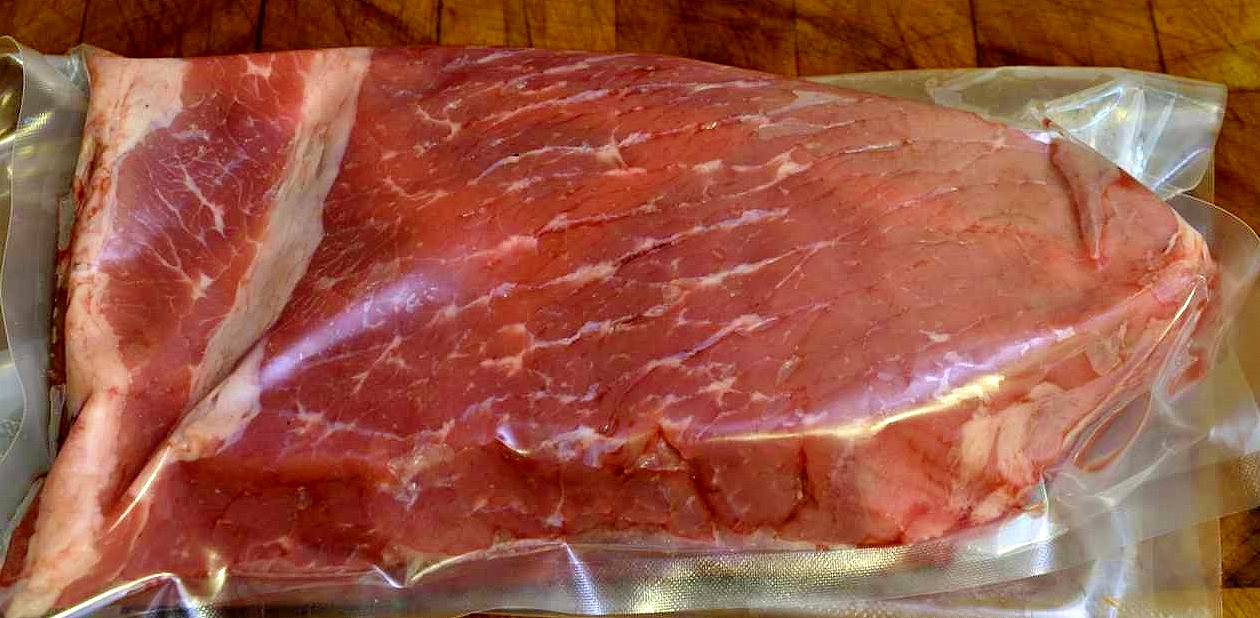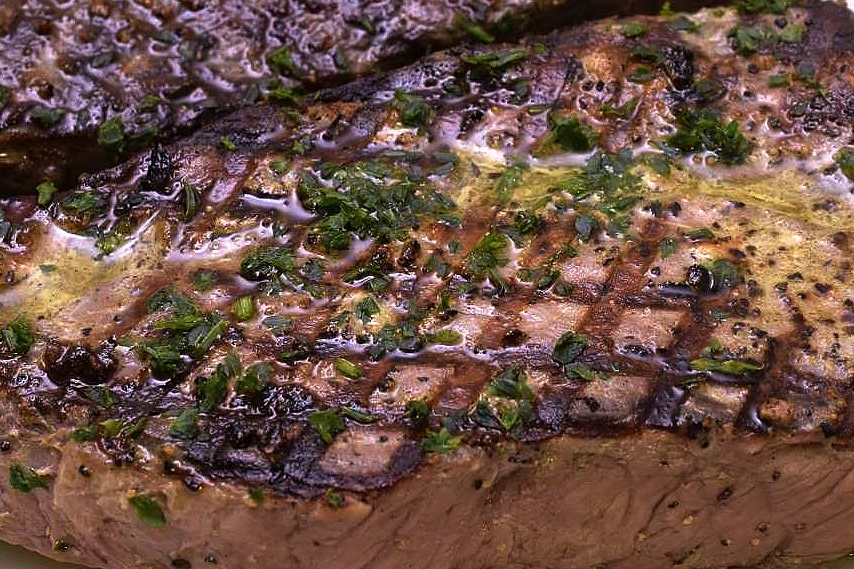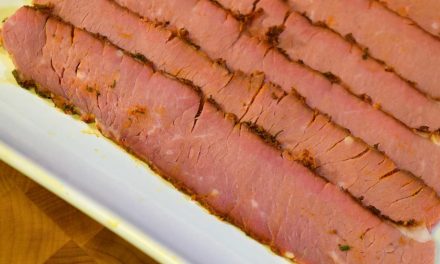Liverpool is only an allegory
London Broil – The part of the steer not on any map, or even on any steer. You can get French Toast in Parisian restaurants that cater specifically to American travelers–but we all know that it’s not French. It’s not toast either, for that matter. The “Chinese” food we get in this country is a far cry from the food they serve in China. The same is true of Mexican and many other ethnic foods. I guess it shouldn’t be a surprise to discover that “London Broil” is little more than a marketing ploy contrived to sell inexpensive cuts of meat at steak prices.
Marketing is everything–or is it?
When you see a cut of meat with that label in your butcher’s case, it may be anything from top round to eye of round, to bottom round, chuck or even brisket point. None of these are inherently tender enough to serve “London Broil” style, that is, seared quickly and sliced thin on the bias. Marketers will try to convince us that a marinade, more specifically, THEIR marinade will replace toughness with tenderness. There is no science to support that claim, and there is a LOT of science to contradict it.
Thankfully, sous vide is the perfect application to make almost any cut tender without losing its pink appearance. We are going to use top round that I bought whole and broke down myself, but you don’t have to. Any cut of London Broil/Top Round of 2 lb/1 Kg that you see in the case will work–the thicker the better. Butchers don’t want you to know how easy breaking down this cut is, so we explain how to do it in detail HERE. Top/inside round is from the hind leg, a hard working collection of muscles. While expensive cuts of meat come out great when prepared sous vide, inexpensive cuts can really be made to resemble the much more highly priced items.
Lean on me

Once you remove a significant amount of multipurpose trim, you end up with some very lean, very tough pieces. I usually section them into 2-4 lb/1.5-2 Kg roasts.

Once they’re processed, shocked and grilled…we’re hoping they come out looking like this, and they probably will!
Preheat the sous vide bath to
129 F/54 C. This temperature setting will give you a medium rare result. For more detailed information on appearance of doneness parameters, click the link HERE.

Set your timer to
36 hours.
Time controls tenderness, but a clock cannot be used to MEASURE tenderness–like they say, “results may vary.” Click on the link HERE to learn how to determine if your roast is tender yet. Or, cut open the bag, cut off a piece and eat it. In the worst case scenario you will have to endure the cost of another vacuum bag.
Note: Top round is tough, which means it is durable. There is no rule that says that the processing must stop after 36 hours. 96 hours is safe. We have come this far–what’s another day or two?
There is no “moment” before which the roast is tough and after which it is ruined. Sous vide is very forgiving in that regard. If your 36 hours have elapsed and your top round is satisfactorily tender at 9 am but you want to serve at 7 pm, just leave the roast in the bath. Trust me, it’s not going to dissolve. You can reduce the heat to 125 F/52 C to create a safe “holding pattern” but don’t go any lower than that. More on that in the next section.
Shock or rock
Once the necessary time has elapsed, you have choices. If you want to serve immediately, you harvest the juices, set them aside, remove the roast from the bag, season it, grill it, slice it and serve it. Easy peasy, as they say.
Or, you cold shock it. Submerge the sealed package in iced water until it achieves 70 F/21 C and then refrigerate it at 40 F/4 C. This process prevents it from putting an undue burden on your home refrigerator. It also prevents other food in the fridge from heating up. This is explained in great detail HERE.

Chillax
If your vessel is close enough to a sink, you can siphon out the hot water and replace it with iced water. Cold shocking is highly recommended and very convenient if you are planning ahead or doing several pieces. The meat is pasteurized when prepared by this method, so it will keep at least two weeks in the refrigerator if you don’t crack the seal. You can then “treat as raw,” by which I mean “pretend that sous vide never existed and grill your steak/roast as if it was inherently tender.” Mouth hot is about 125 F/52 C, surely you have a probe thermometer by now. If you don’t, get one. Very useful. Note: As great as shocking is, if you shock a single portion steak after processing, you may lose a little pink when you retherm it later. The smaller the cut of meat, the greater the relative surface area. Myoglobin is water based, so it has a tendency to leak out wherever it can.
No matter which choice you make, I always tell people to season your roast AFTER processing–there are exceptions, but this is not one of them. Salt can penetrate the surface of meat in the sous vide environment, but nothing else can. This is scientifically verified. I don’t salt the bag, because, well, I don’t like it. To me, it tastes like somebody tried to make corned beef but they changed their mind half way through the process. Nobody ever said my steaks and roasts weren’t salty enough.
Season as desired or use the method we developed specifically for this purpose, linked HERE.

Preheat a thick bottomed pan (I use cast iron with grates), or an outdoor high temperature BBQ device. People go crazy with the surface temperature but I find 450 F/230 C to be more than sufficient.

Make sure you turn on your hood fan and it’s not a bad idea to open a window either.

After searing, let the roast sit for a couple of minutes–what’s the rush at this point? This step makes it easier to handle and gives you time to do the rest of your assembly, or, even, have a sip of wine and congratulate yourself.

There is a lot to like about this.

Cherry tomatoes with a little EVOO and a pinch of the rub. The method for making the jus is linked HERE.

Did I mention chopped parsley?






